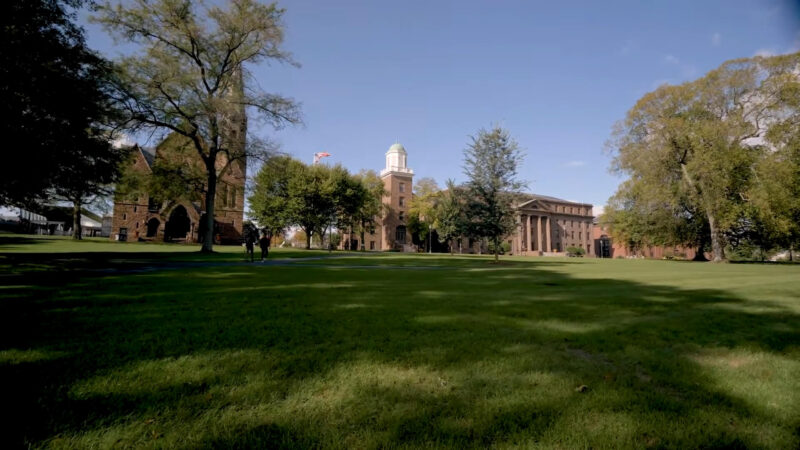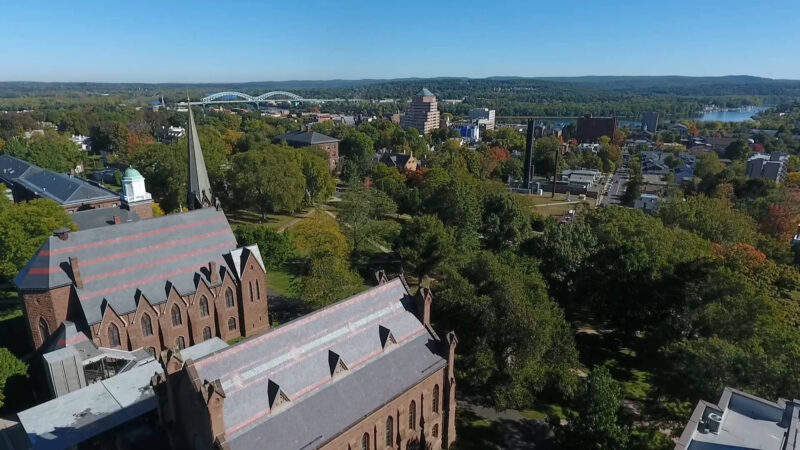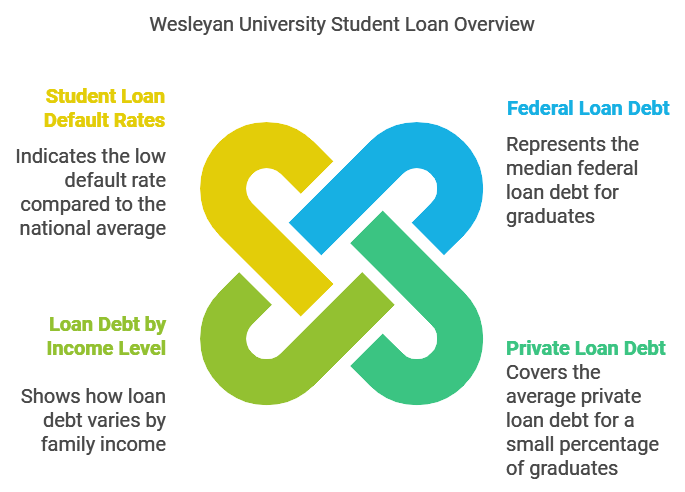Attending a university like Wesleyan comes with a lot of excitement, but also a need to plan for the financial commitment. For students and families, it’s important to understand not just the tuition, but also the additional costs involved in attending.
From housing and meal plans to optional fees, the overall cost of attendance can add up quickly. With financial aid options and a commitment to meeting demonstrated needs, Wesleyan ensures that students have support in covering these expenses.
Now, let’s break down the real costs to give you a better picture of what you can expect.
Breaking Down Tuition, Fees, and Extra Expenses
| Tuition | $69,652 |
| Activity Fee | $390 |
| New Student Matriculation Fee | $300 |
| Green Fund Fee (optional) | $30 |
| Food and Housing | $19,872 |
| Books, Supplies, and Personal Expenses | $2,750 |
| Total (First Years) | $92,994 |
| Total (Continuing Students) | $92,694 |
| Direct Loan Origination Fees | $44 |

There are mandatory fees, such as the activity fee and the matriculation fee for first-year students. Wesleyan also offers optional costs, like the Green Fund, which supports sustainable projects on campus.
Housing and meal plans are required for all students, contributing a significant portion to the overall cost. Additionally, students should account for books, supplies, and personal expenses that will come up during the year.
For those who opt for federal loans, a small loan origination fee is added. It’s also worth noting that Wesleyan meets the full demonstrated financial need of its students, so financial aid plays a key role in covering these expenses.
What’s Included in Wesleyan Tuition?

Students benefit from access to a wide range of resources, including state-of-the-art academic facilities, dedicated faculty, and various student support services. While the base tuition fee for the 2024-2025 academic year is set at $69,652, there are other required and optional costs that students need to consider as well.
What Does Tuition Cover?
Wesleyan’s tuition mainly goes toward academic programs, including the cost of faculty salaries, curriculum development, and student services. It also ensures that students have access to campus amenities like libraries, research facilities, and technology resources.
The tuition also covers student involvement in academic support systems such as advising and tutoring, which help students navigate their academic journey successfully.
What Else to Consider?
Wesleyan requires all undergraduates to live on campus and participate in a university meal plan. First-year students also pay a one-time matriculation fee of $300, which helps fund orientation programs and first-year events.
For those interested in sustainability, there is an optional Green Fund fee of $30 that supports environmentally-focused initiatives on campus. This fee can be opted out if the student chooses not to contribute.
Additionally, other estimated costs, such as books, personal expenses, and travel, are not billed directly by Wesleyan but should be factored into a student’s budget. On average, students should expect to spend around $2,750 for books and supplies each year.
Financial Aid at Wesleyan

Wesleyan University has a strong commitment to making education accessible regardless of a student’s financial background. One of the most important aspects of attending Wesleyan is its policy of meeting 100% of demonstrated financial need for all admitted students.
How Financial Aid Works
Wesleyan calculates financial need based on a student’s family contribution, which is derived from both the FAFSA and the CSS Profile.
After determining the family contribution, Wesleyan uses it to calculate the student’s need and builds an aid package to meet that need through grants, loans, and work-study options.
No Loans in Aid Packages
A significant update to Wesleyan’s financial aid policy is the removal of loans from financial aid packages. This means that instead of burdening students with loans, Wesleyan provides additional grant support to cover the demonstrated need.
The institution has committed to reducing student debt to make education more affordable. Grants do not need to be repaid, making this policy a major financial relief for families.
Work-Study Opportunities
Many students at Wesleyan also take advantage of work-study programs to help cover their personal expenses. Work-study jobs are available both on and off campus, allowing students to earn money while balancing their academic commitments.
Scholarship Opportunities
In addition to need-based financial aid, Wesleyan offers merit-based scholarships for academically exceptional students. These scholarships recognize academic achievements, leadership potential, and talents in the arts or sciences.
While merit scholarships are highly competitive, they offer an additional way for students to lower their overall costs without taking on loans.

While the main costs of attending Wesleyan University, such as tuition, fees, and room and board, are well-documented, students and families should be aware of additional, less obvious expenses that can impact their budget.
These hidden costs, while not directly billed by the university, can significantly affect the overall financial commitment.
Travel Expenses
Flights, train tickets, or long drives can add up quickly, especially if a student plans to visit home during breaks. International students or those from distant states may face particularly high travel costs.
Wesleyan’s location in Middletown, Connecticut means that students who need to travel frequently to major cities like New York or Boston may also incur transportation expenses throughout the semester.
Study Abroad and Off-Campus Programs
Прикажи ову објаву у апликацији Instagram
Wesleyan encourages students to participate in study abroad programs, which offer enriching experiences but often come with their own set of additional costs.
While financial aid can be applied to some programs, students may still face out-of-pocket expenses for travel, additional tuition fees, and living arrangements in foreign countries.
Similarly, students involved in off-campus study programs or internships might encounter extra housing and commuting costs.
Technology and Software
Many courses at Wesleyan require the use of specific software or technological tools. While Wesleyan provides access to some software programs on campus, students may need to purchase or subscribe to additional software or hardware for their personal use.
This can include advanced tools for specific majors like graphic design, music production, or coding.
Clubs, Organizations, and Extracurricular Activities
While the student activity fee covers some club-related expenses, participation in certain clubs, sports, or organizations can come with extra costs.
For example, travel for competitions, special events, uniforms, or equipment required for specific activities can lead to additional expenses. Students who are heavily involved in extracurriculars should plan for these potential costs.
Health Insurance and Medical Expenses
Wesleyan requires all students to have health insurance, either through their family’s policy or by purchasing an optional student health plan through the university.
While some students may be covered under family plans, others will need to pay for Wesleyan’s optional student health insurance, which adds to the overall cost of attendance.
Additionally, students may encounter co-pays or out-of-pocket expenses for medical visits, prescriptions, or emergency care during their time at the university.
Student Loan Debt at Wesleyan University
Attending Wesleyan University, like many top institutions, often involves taking on student loans to cover the cost of education. It’s essential to understand the implications of student loan debt and how it might affect your financial life after graduation.

Federal Student Loan Debt
For students attending Wesleyan, the median federal loan debt at graduation is around $17,000. This figure reflects the amount borrowed through federal loan programs, such as subsidized and unsubsidized Stafford loans.
If repaid over 10 years with an interest rate of 5.05%, the monthly repayment would be approximately $180. This is considered a manageable amount of debt for many graduates, especially when compared to other private institutions.
Private Loan Debt
Although a smaller portion of Wesleyan students take out private loans, those who do generally borrow a larger amount. Approximately 5% of graduates carry private loans, and the average private loan debt at Wesleyan is $57,813.
Private loans typically come with higher interest rates and fewer flexible repayment options than federal loans, which can make them more difficult to manage.
Loan Debt by Income Level
For students from lower-income families (earning less than $30,000 annually), the typical federal loan debt at graduation is around $8,988.
Families with annual incomes between $30,001-$75,000 accumulate slightly more debt, averaging around $12,782, while families with higher incomes (over $75,001) typically see loan amounts close to $16,000.
Student Loan Default Rates
Wesleyan University has a low student loan default rate of 1.4%, far below the national average of 9.3%.
This low default rate suggests that Wesleyan graduates are generally able to repay their student loans without difficulty, which can be attributed to strong post-graduation employment rates and salaries.
Impact on Financial Future
The average debt is well below the national average, making it more manageable. Wesleyan’s financial aid program significantly reduces the need for high loan amounts by meeting 100% of demonstrated financial need, which further helps graduates maintain a healthy financial outlook.
FAQ
Last Words
In conclusion, attending Wesleyan University involves a variety of costs beyond just tuition. While the financial commitment is significant, Wesleyan’s commitment to meeting 100% of demonstrated financial need through financial aid, grants, and loans helps make this education more accessible.
Understanding the total cost, including mandatory fees, housing, optional expenses, and potential student loans, is essential for proper financial planning.

